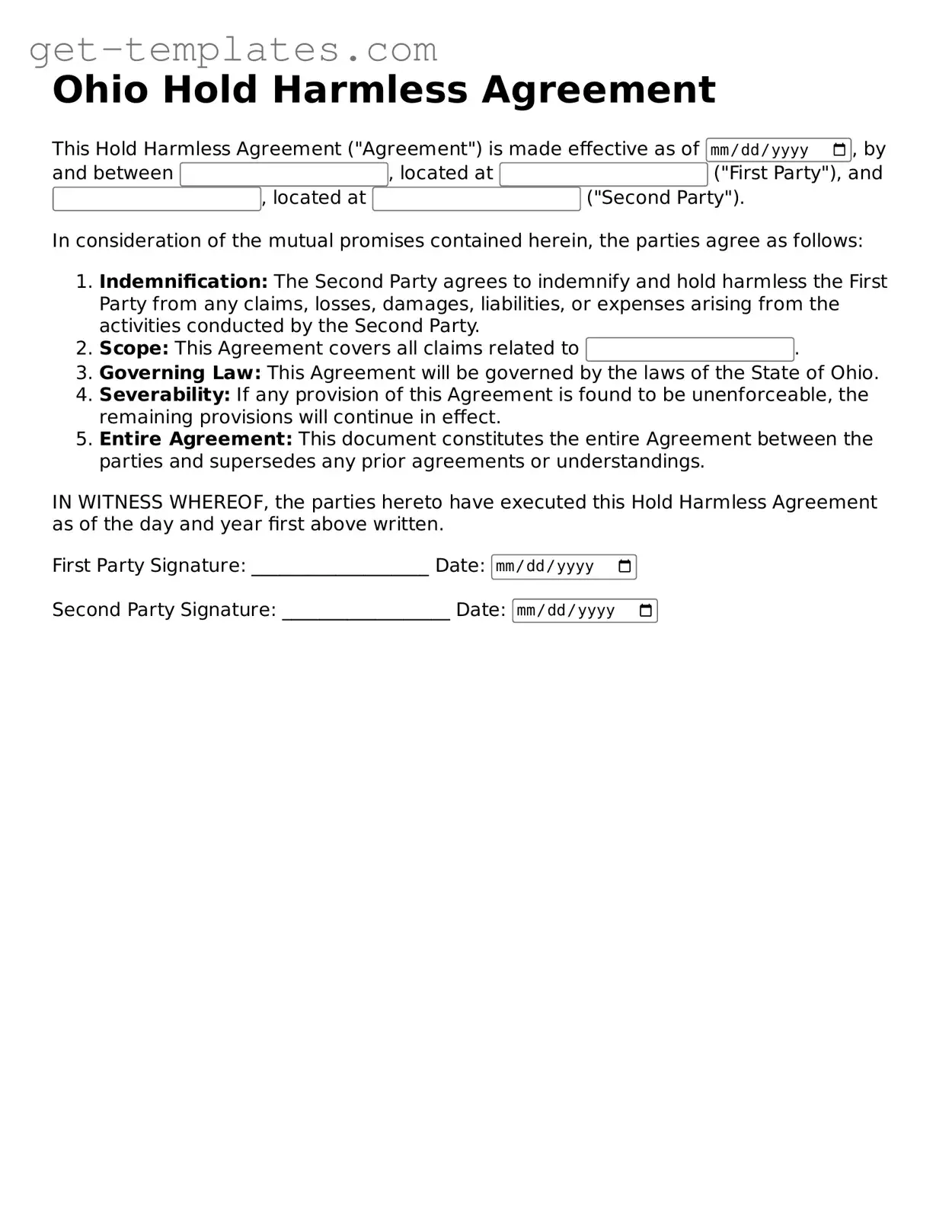Attorney-Approved Hold Harmless Agreement Document for Ohio
The Ohio Hold Harmless Agreement is a legal document designed to protect one party from liability for damages or injuries that may occur during a specific activity or event. This agreement serves to clarify responsibilities and ensure that one party will not hold the other responsible for certain risks. Understanding its purpose and implications is essential for individuals and organizations engaging in activities that carry potential hazards.
Get Document Online
